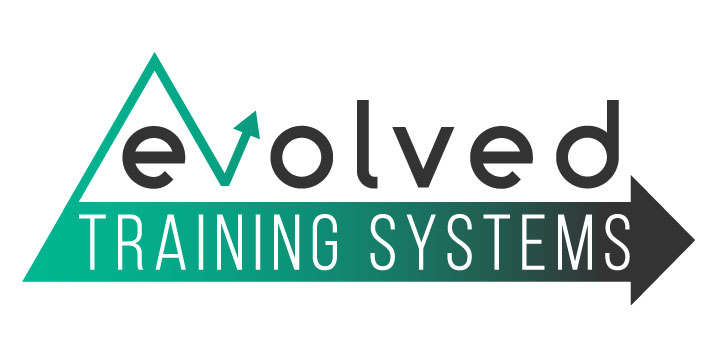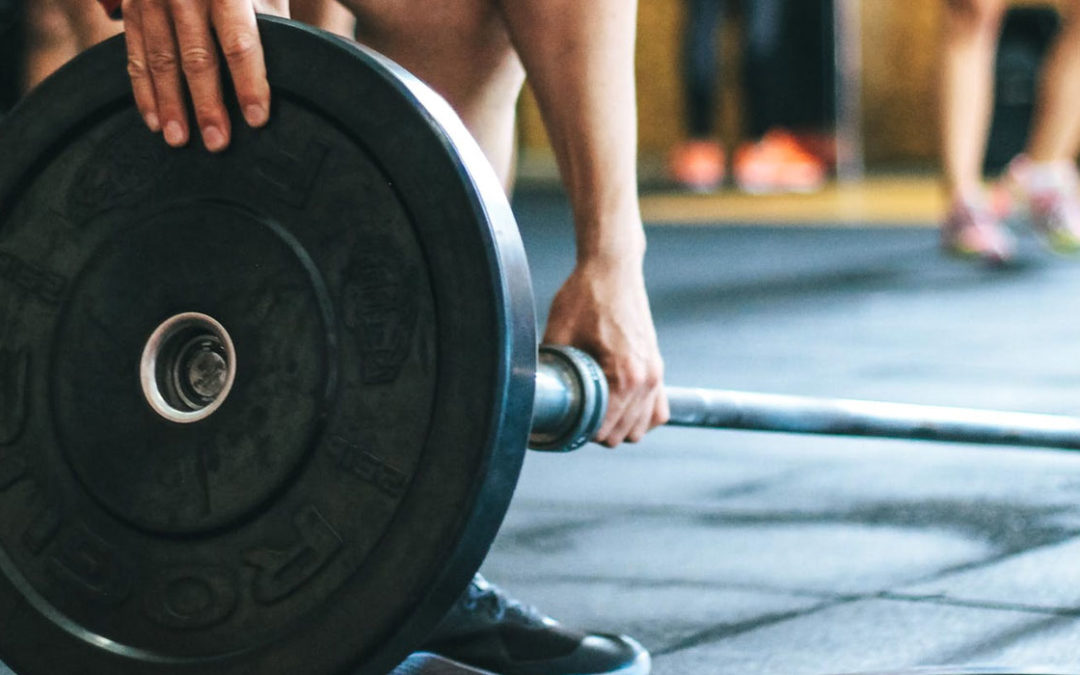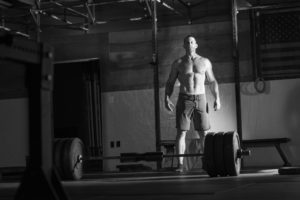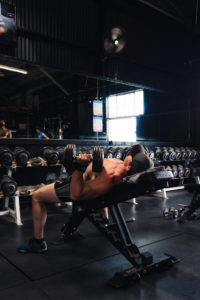Full disclosure, I have always used percentages in programming for athletes. It makes sense because it keeps a progressive structure, it ensures small loading is added to the bar, and it allows for programming deload weeks or to oscillate intensities.
But what if I’ve been wrong the entire time? What if there is a better way?
Recently, I have been taking a different approach. When I say recent, I mean very recent. I began experimenting with this idea a few years ago, but I didn’t implement it as the primary means of coaching my athletes until the last few months.
First things first, let’s go over some of the problems with the percentage system so that we’re all on the same page here.
Novice Athletes
Any legitimate coach knows better than to use percentages with beginners. The main reason being that the novice trainee doesn’t know their max for lifts. Even if he or she were to go test their max on a few lifts, there would be two problems with this data:
1. They don’t have the proficiency of movement pattern engrained to allow them to push a movement to the brink of absolute failure. They still have so much to learn in how to brace their bodies, where to push, how to align their leverages and just general technical proficiency. This is evident that in most cases, a beginner will fail a weight, you’ll give them a form tweak or tell them how to breathe, and they’ll easily make the rep. So lack of accurate data is a huge factor here.
2. Progress occurs at such a rapid rate with the novice population, and with such variance between each individual, that trying to create a percentage system that makes sense would be impossible. In fact, in most cases, these beginners would be lifting above 100% of their “max” within a matter of weeks.
Simply, the percentage-based system is not applicable to a beginner, ever, for any reason.
Advanced Athletes
The advanced trainee has a whole different set of problems within the framework of a percentage-based system. Let’s first define “advanced.” These athletes have been training a long time. In most cases, they will be defined by being within 5% of their genetic potential. Many would argue this to be closer to 2%, but we’ll use 5% for the time being. So if you take an athlete that can squat 500 lbs, they might realistically squat 525 lbs one day, but not much more than that. Many people like to define advanced as years of training (5+) but I would argue that it’s more relevant to use the former approach, and this will become clear when I discuss the intermediates.
1. Every single advanced athlete can tell you their max, or their “PR” on almost any lift. This is great information to have, but to use this “max” when calculating a percentage-based system would be crazy. This athlete has been training for years and years and one lucky moment, when they felt incredible, and the bar was moving fast, and they had perfect sleep, and their nutrition was flowing through their body, they managed to make this lift. That is the essence of a “Personal Record” or PR. This is not a repeatable feat of strength. If it were, it would just be a heavy weight I can make regularly, and the PR would be higher.
There is a solution for this problem. If the athlete would use a “training max” or a weight that can be made with regularity as the established max for the percentage-based system, this could work. The problem is that most athletes feel the need to push themselves further, as if there is some inherent fear that failure to lift heavy will mean they become weaker.
2. There exists a very real level of mental angst at the thought of having to go Back Squat 92% doubles, or to have to Snatch 3 singles at 91%. The best athletes can use this as motivation and can jack themselves up for these adrenaline-fueled percentages; but even they have moments of self-doubt creep into the mind. The process of having to amp yourself up, push away self-doubt, and continue to do this day after day will wear on you. Eventually this will lead to lack of training motivation, increased cortisol, low quality sleep, and a general lack of self-satisfaction.
The solution here could be the same as the above, but it doesn’t change that heavy weights are heavy weights, and there is a burden to be endured both physically and mentally by a program telling you to get under these types of loads consistently. If there were a 500# back squatter, would you still program a 5 x 5 @ 80%? That means this athlete needs to squat 400 lbs for 25 reps. This is quite different than an intermediate lifter with a 300# max squatting 240 lbs for 25 reps.
Intermediate Athletes
The intermediate stage is a great place to be. This time period of training can be defined by someone who has been training intensely for over a year. They have made some solid progress, and no longer can they add 5 lbs to the bar every time they lift. This level of athlete has established “PR’s” but the PR’s are still increasing at the end of each cycle; if only by a few pounds, they’re still going up. Progress has not stalled, and form is still improving regularly.
This is the one stage of training where percentages make more sense.
1. The weights are not heavy enough quite yet to provide the same level of physical toll as for the advanced athlete. Furthermore, the mental angst and self-doubt are almost non-existent, and instead the intermediate athlete is fueled by the excitement of another training day and the possibility to improve.
2. The “PR” for the intermediate athlete is a realistic number. There is so much development still occurring within the framework of their body and movement patterns, that this athlete realistically could PR the majority of lifts at the end of a percentage-based cycle. Due to this aspect, the percentage-based system provides the athlete with a sense of structure and progression that would not be as effective with the advanced approach I will describe below.
A Different Approach
I began my experiment a few years ago. It started slowly, and I would occasionally throw in pieces of training that say something like this:
Work up to a smooth but challenging double. Then back the weight off 10-15% and complete 5 sets of 2
For a day more focused on proper execution, I would write this:
Work up to a moderately challenging double, then complete EMOM x 6 min at that load
(make sure technique is perfect and crisp. If loading sacrifices form, drop a bit off)
A heavy day of training might read like this:
Work up to a 3 RM for the day
(Hit triples up to 70%, then all singles after, until desired working weight)
This type of phrasing provided a couple extremely important benefits for my athletes:
1. It provides them the language that guides them to the loading they should be using on THAT day. Advanced athletes do not like to take unplanned days off, and often wear it as a badge of honor to go train on a day they don’t feel all giddy or motivated. This format allows them to back off the loading on those days, and to push it a little harder on the days they feel great. A “moderate” double is relative to the way they feel on that specific day.
2. No longer do athletes need to look at the programming, calculate their numbers, and then be hit with panic at the thought of hitting exorbitant numbers. I am not saying a coach should avoid this completely. In fact, it is necessary to add pressure and challenge your athletes. It just shouldn’t be happening so often, and it should be timed properly within the confines of the given training cycle. An athlete that feels relaxed and motivated to train will perform better over time than an athlete that is on edge or overthinking their programming.
3. An advanced athlete KNOWS what a heavy set of 5 reps is supposed to feel like. This athlete knows what a “smooth but heavy double” will require from them.If I provide them a series of words that create a vision of their movement for that exercise, they have discretion to push that set to whatever point they believe is within reason for that day. This method puts the training back into the hands of my athletes. As a coach, I do not want my athlete to feel like a failure because they couldn’t hit the percentage on a given day.
I would much rather my athlete tell me “Hey B, I only worked up to 225 snatch double today, but man it felt good, and I’m pretty confident I can make 227 next week.”
This is much better than “Hey B, I failed my 232 double today. Dude, that 84% felt really heavy for some reason.” This type of mentality then causes them to question their nutrition, sleep, their technique, or any other number of factors that could be the “cause” of why they failed to hit the percentage the coach gave them.
So this way, is now the way I prefer to train my advanced athletes. I have spent a long time refining this process and I have had nothing but positive feedback from those that have been using this method. The ability to use phrasing and words to communicate the agenda is substantially more effective than an arbitrary statement of percentage or loading. Advanced athletes have gotten to where they are because they have put in the time, and achieved the gains. These athletes thrive on structure, the repetition of “putting in the work,” but they also have earned the right for a more personalized experience. Be the coach that guides them, not the coach that dictates to them. Let them be responsible for their own success.




